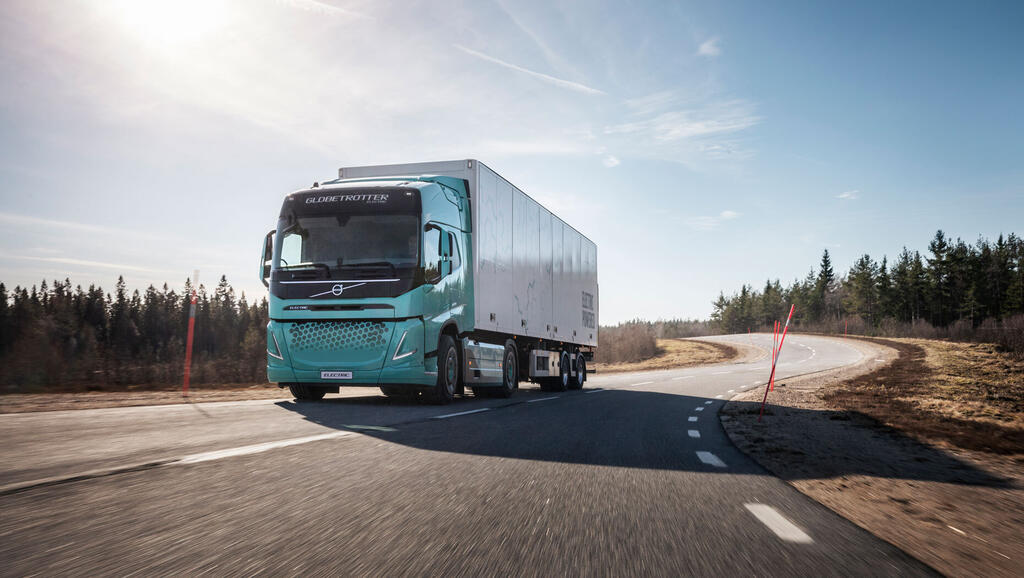Unique collaboration paves the way for electrified freight transport
Electrification of truck transports is required to reduce the climate and health impact of heavy road traffic. A number of actors are now joining forces to test an electrified freight transport system in Mälardalen and Västra Götaland, with the intent of large-scale national introduction.

The transition to an electrified freight transport system is an important step towards a sustainable society. But the change is more complex than it first seems. It challenges a well-established system of great importance to Sweden.
Electrification requires new ways of working and agreements in the transport system and its value chains. Many stakeholders are directly and extensively affected. And questions about common resources, rules of the game, institutional gaps, distribution of costs and risks as well as behavioral changes will be brought to the forefront and need to be answered.
Projektet Reel now brings together representatives of truck manufacturers, electricity network companies, energy companies, charging station operators, hauliers, recipients of goods transport and public actors. Together, they will test and develop electrification of regional transportation with heavy trucks in practice. First out is transportation of up to 300 km in Mälardalen and Västra Götaland respectively. The project is financed by the Swedish Energy Agency and Vinnova with SEK 12.5 million for 2020-2021.
- Tests with different actors are necessary to succeed with real change. What behavioral changes are required, how business models change and how public governance best contributes to change are examples of questions. This is a clear example of a demonstration of systems that can both gain international luminosity and contribute greatly to change, says Darja Isaksson, director general of Vinnova.
The purpose of the project is to pave the way for large-scale electrification in Sweden. 60 percent of all freight transport by road is regional. With experience and data from tests in a real environment, the project's solutions will be extended to more regions. The project will also take into account follow-on investments for implementation throughout Sweden.
- This is an important first step towards a large-scale electrification where collaboration between business actors and the state is necessary, which is now further strengthened by the significant effort on charging infrastructure announced in the budget bill, says Robert Andrén, director general of the Swedish Energy Agency.
Before a national introduction, certain issues must be addressed. The project includes highlighting the following:
- Who takes the cost and risk when trucks become more expensive to produce?
- Where and how is it convenient to charge electrified trucks?
- What infrastructure is needed when many people are charging at the same time?
- What does it mean when transportation, loading and unloading to a greater extent can take place at night to utilize capacity because the vehicles are quiet?
- Can an electrified freight transport system provide increased transport efficiency from an energy, environmental, resource and economic perspective?
- How are logistics flows and scheduling optimized for drivers, vehicles, charging stations and loading bays to minimize truck downtime?
- How are transparency and standardization guaranteed that enable competition and economic sustainability in all parts of the system?
- How can public governance and support effectively promote the development of the transition?
Participating parties in the Reel project are Chalmers, Dagab, EVBox, Göteborg Energi, Scania, Vattenfall, DHL and Volvokoncernen. The project also involves the Energimyndigheten, Trafikverket och Vinnova. The state authorities contribute funding, case expertise, system perspective and synchronization of R&I support and infrastructure measures. The Swedish Energy Agency and Vinnova finance with SEK 12.5 million, while the project parties contribute with SEK 17.5 million. The project is led by the collaboration platform CLOSER at Lindholmen Science Park.
The project will run until the end of 2021. Initial demonstration and tests in a real environment will begin immediately. A more large-scale introduction in more regions is expected during the last quarter of 2021.
